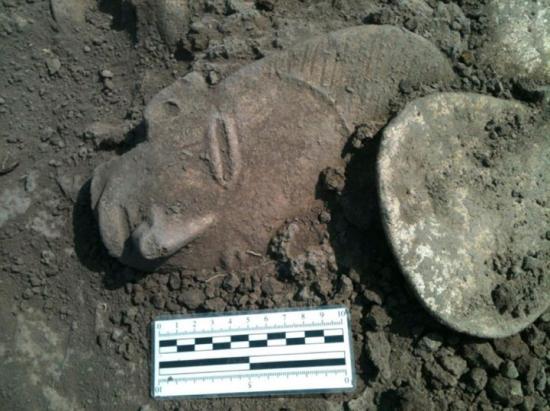
Rostro de una figurilla con características del estilo chinesco
Archaeologists find burial of unusual characteristics in the Mexican State of Sinaloa
Source - http://artdaily.com/news/71769/Archaeologists-find-burial-of-unusual-characteristics-in-the-Mexican-State-of-Sinaloa?#.U9J-wfl_vVQ[/url]
Photos = INAH
DESCUBREN UN ENTERRAMIENTO DE LA TRADICIÓN TUMBAS DE TIRO AL SUR DE SINALOA
Source - http://inah.gob.mx/boletines/14-hallazgos/7275-descubren-un-enterramiento-de-la-tradicion-tumbas-de-tiro-al-sur-de-sinaloa
In the southern parts of Sinaloa, a burial of unusual characteristics was discovered, made up of elements from old Occidental Mexico and rich offerings deposited around bone remains. As the excavation advanced, never seen before archaeological traces surged; informed archaeologist Victor Joel Santos Ramírez, director of the project. First, there were dozens of miniature figurines. “In no other excavation in Chametla have we found figurines in such numbers and with such rare characteristics, which made us believe that this was an important offering, to wit, we decided to begin a systematic investigation,” he said.

Algunas de las figurillas en el momento de su recuperación.
The archaeologist of the National Institute of Anthropology and History (INAH) explained that as the excavation continued they ran into ceramic pots and figurines, along with a great amount of beads and necklaces of turquoise or green stone, a turquoise hoop, a spindle, a hollow fragment of a miniature, and chippings of obsidian green.
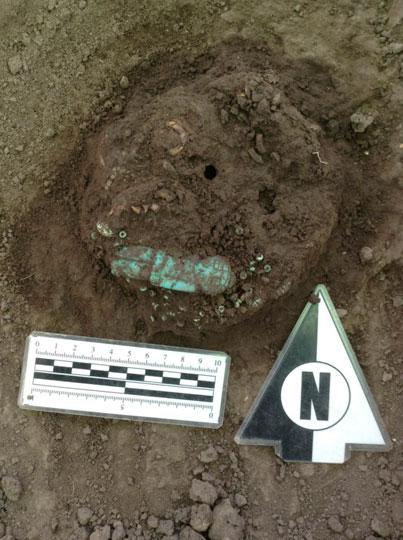
Figurilla de turquesa, cuentas asociadas y aros de hueso.
In the next level they found what looked like an in situ offering: four principal figurines placed around a central plate with smaller figurines gripping each other’s’ shoulders in representation of a ritual placed around them, along with a model of a double temple.
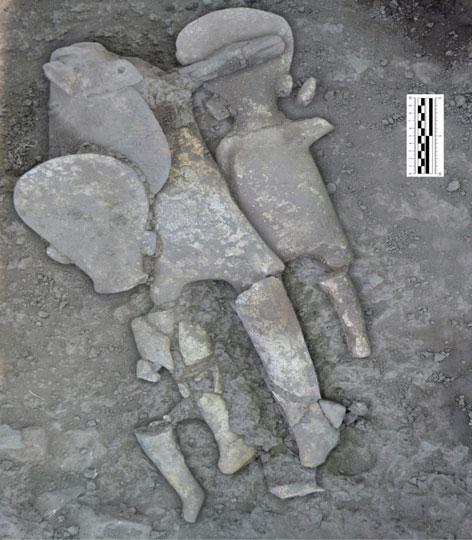
Figurillas de grandes dimensiones, de estilo denominado chinesco.
At another point in the excavation they found other ceramic pieces in association: a figure of a throne and an inverted bowl full of figurines of turtles and other animals, with some human-like forms in the mix.

Figura de personaje sentado en trono
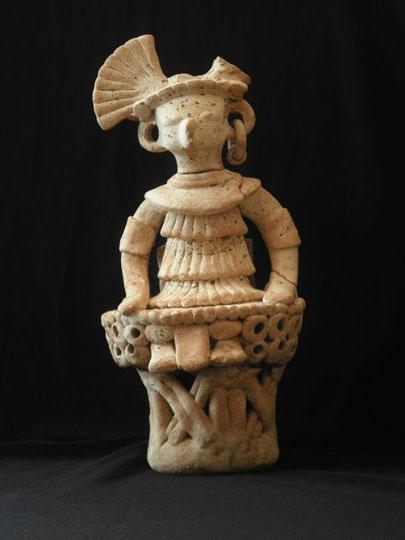
Personaje en trono. Su forma de bejuco entrelazado es muy parecido a los equipales tradicionales de Jalisco
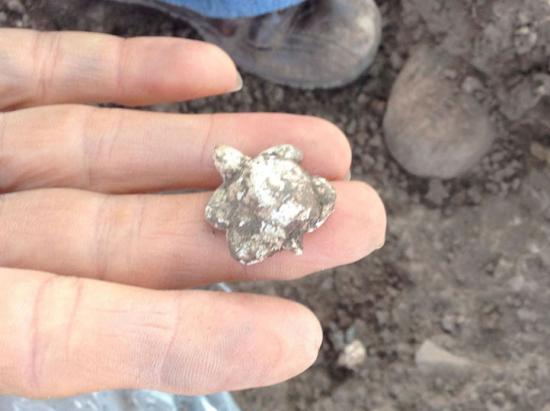
Figurilla con representación de tortuga. Localizada dentro de un cuenco invertido.
They also found some materials of another offering; like a miniature pot, three chippings of obsidian green and two brown spindles, a bone needle and a figurine. In another location, they found a pot in the shape of a foot. As the excavation continued, the archaeologists found two mandibles with all of their teeth and some fragments of skulls. In the same place, they found more chippings of obsidian, spindles, ceramic miniatures and a pot; along with two large figurines with slanted eyes. Finally, the archaeologists found evidence of a human burial, with possibly various individuals, their bones painted the color red.

Fémur cubierto con pigmento rojo. Posiblemente se trata del entierro de los fundadores de la tradición Chametla, la cultura sedentaria más antigua de Sinaloa.
“It is to note that despite Chametla’s short distance to the sea, marine tools were not found present among the archaeological materials, but rather there were tools that correspond to other latitudes.
“Based on the characteristics of the burial and its offerings, this finding confirms the cultural relationship that once existed during the precolonial era between the Occident and the south of Sinaloa, thus, it is likely that the human remains of the now known “Tomb 1” correspond to the bearers of an ancient occidental tradition who founded the oldest known settlement found thus far,” concluded the archeologist Joel Santos.